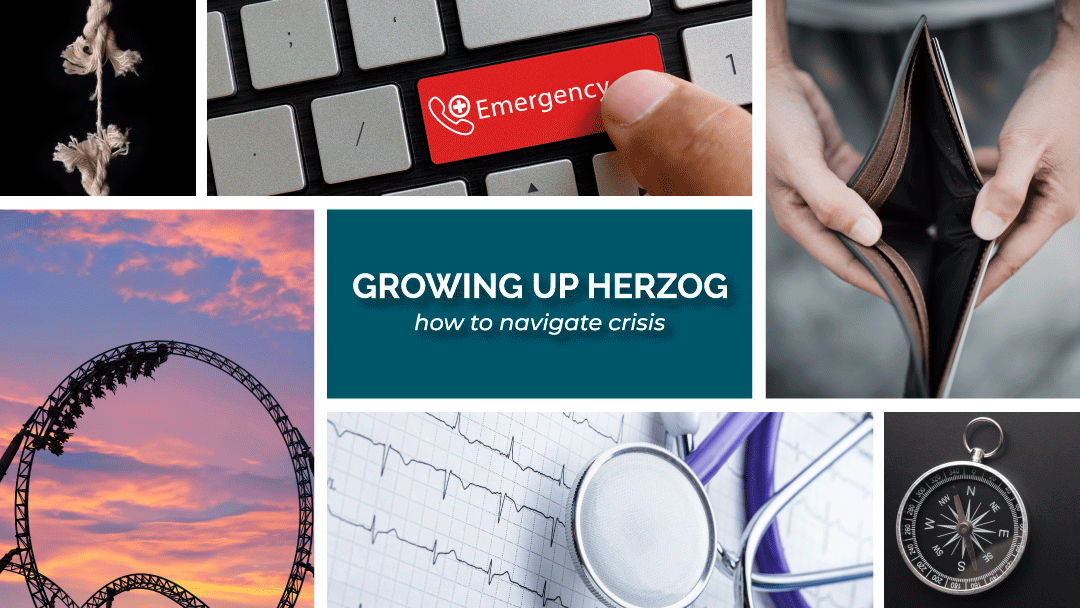
Dear Curious SooN Adults of the Internet,
In response to what I felt was just another standard Herzog weekend download, my friend said: “Elisha, your resting heartbeat is my heart attack.”
I laughed and attributed my stamina to “GROWING UP HERZOG“.
GROWING UP HERZOG meant navigating chronic illness and mental health challenges, financial hardships and a lot of unexpected crises. It was a perpetual rollercoaster and it’s the reason I developed the endurance and resilience that was at the core of my friend’s comment.
Sure. There were a lot of things that happened GROWING UP HERZOG that I would have preferred to watch as a drama on primetime television [#ThisIsUs]. The main lesson I learned Growing up Herzog was to keep moving forward in a time of crisis. It was through the adversity that I built this framework. It helps me to start where I am and move forward a little bit one day at a time.
To the perpetual rollercoaster that is life!
Enjoy,


New to SooN ADULTING?
I’d love to share how my self-proclaimed super power of bringing process to chaos has influenced it. You can learn about the SooN LIVING origin story on START HERE
Step #1: Acknowledge Your Crisis
Over
So the first step to navigating a crisis is simple: acknowledge when you are experiencing a crisis. For instance, here is a list of terrible things that happened to me over the last year:
- I navigated an incredibly rare and fatal pregnancy.
- The condition caused me to lose my third child, Noah, in my second trimester at 20 weeks.
- The pregnancy ended in an emergency hysterectomy.
- I am unable to have any more biological children.
- I still navigate post traumatic stress and anxiety today as a result of the experience.
- Following the surgery, I began to have terrible back pain.
- I spent 6-months trying to work through the pain but found it only got worse.
- I had spinal surgery to correct the herniated disc that was pressing on both my sciatic nerves [causing the terrible pain].
Put differently, it sucked. The truth of the matter is that there is a lot more to the story than these bullet points. I knew that sharing the full details might help others; if you’re interested in the full drama — www.soonliving.com/control
Step #2: Define Your Crisis
Before I developed this framework, I would become stuck in a self-destructive cycle each time I faced a crisis. After acknowledging the crisis, I would quickly become more sad/frustrated/depressed by everyone else who had better fortune than me. This made me feel even worse about my crisis and left me stuck.
But after recognizing this behavior for what it was, I was able to put parameters around my crisis. This helped me push past it and into a more productive mindset.
To define my crisis, I would start by doing what I was already doing naturally — I made a list of things that would be better than my current situation. I call this LOOKING TO THE RIGHT. [Generally, this part is easy.]
Next, I made a list of what would be worse than my current situation. I call this LOOKING TO THE LEFT.
It is not possible to move forward until there is at least one thing on each side of your crisis.
Step #3: Anchor Your Crisis
To anchor my crisis, I’d start by drawing a line with two distinct endpoints. [I’m a visual person so here is a diagram…]
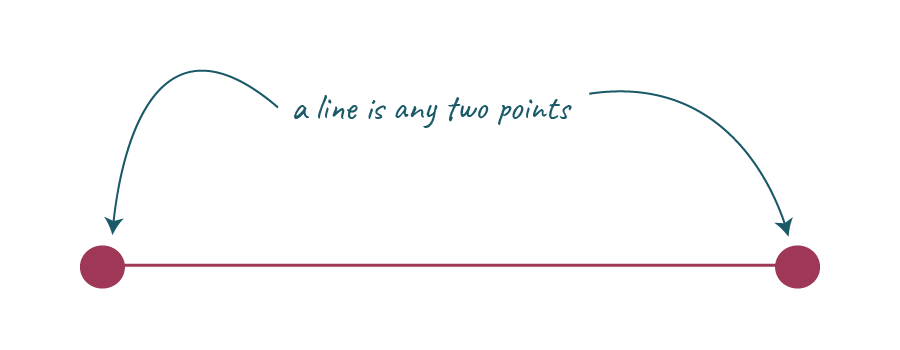
Ultimately, “anchoring my crisis” was really just plotting three points on a line. The goal was to define my crisis as the midpoint and identify one thing from the right and one thing from the left to frame my crisis.
In case you can’t recall the definition of a midpoint from high school geometry, it is exactly halfway between any two points on a line.
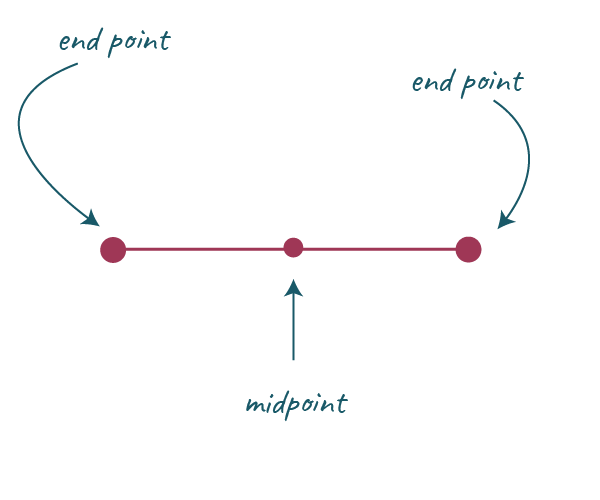
So after drawing the line, I’d plot the midpoint and label it as my crisis.
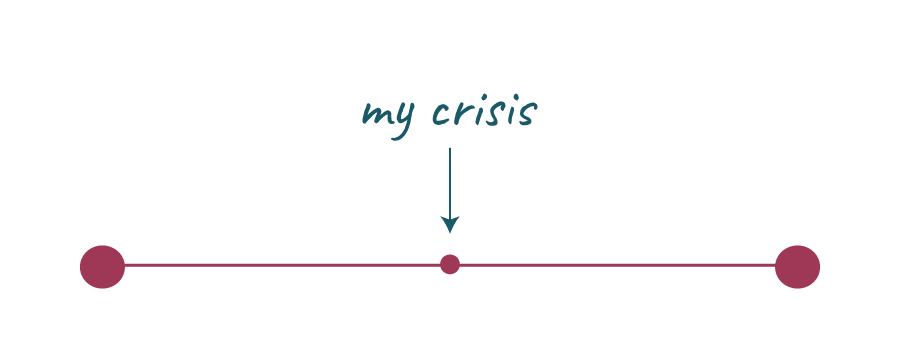
Then I’d anchor my right by picking one thing from my list that would be better than my crisis. I’d label the endpoint on the right after it.
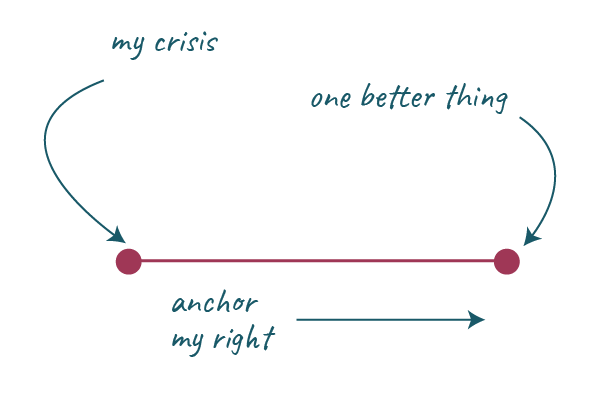
I’d then review the list of worse things and I’d anchor one to the endpoint on the left. [Pick realistic things as your right and left anchor points. For instance, “zombie apocalypse” wouldn’t be a very helpful left anchor point.]
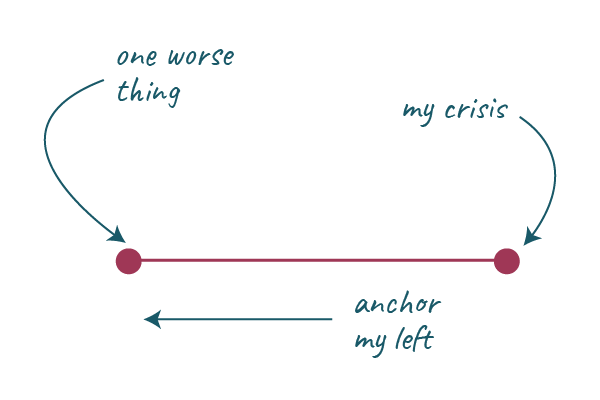
With all the points anchored, I’d put my line somewhere visible to keep top of mind as I processed my crisis.
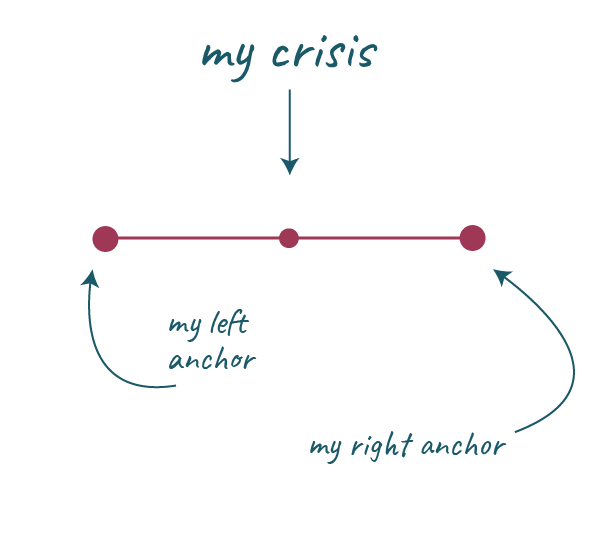
And that’s what I mean by ANCHOR YOUR CRISIS.
This process has forever changed how I navigate a crisis. It works for me because by establishing myself at the midpoint [instead of making my spot an endpoint and only looking right], I am reminded to celebrate the fortune that I do have. I am forced to acknowledge that things could be worse instead of getting trapped in how I wish they would be better.
If this SooN process sounds like it might be helpful for you, you can download the NAVIGATE YOUR CRISIS WORKSHEET for free below.
Get FREE Instant Access Here*
Join our mailing list to unlock access to the SooN LIVING Resource Library.
Download the Navigate Your Crisis Worksheet to apply this three-step framework.
*A low-risk time commitment; unsubscribe anytime.
Navigate Your Crisis — In Action:
Now. There were a few times over the last year that the crisis felt uniquely extreme and I would get stuck feeling like there could be nothing worse than MY CRISIS. Yet, because finding one thing to the left was critical to the NAVIGATE YOUR CRISIS process — I would not move forward until I had found something to label on the left.
So when I would get stuck, I’d Google. I’d use keywords that aligned
Not only did this help me recognize my fortune, I learned a lot about other people in need. This often prompted me to turn my crisis into action and I redirected the energy into doing something positive for someone else in need. This was also
Here are some examples of how I applied the Navigate Your Crisis concept to the challenges I faced last year:
• On the rare and fatal pregnancy: this one was super tough, but if when given the option between life or death — choosing anything but “not dying” did not make sense to me. That said, the journey I traveled gave me a deep respect for anyone with a chronic or terminal illness such as multiple sclerosis or cancer [like my mother]. The struggle definitely is real and I am in awe of the strength, endurance
• On losing a child: In this case, I think it is not possible for this line to have a midpoint. You’ve either lost a child, or not, and that line of demarcation is pretty clear. I’m still working through this and hope to someday be able to talk about it more openly. That said, I am grateful for those who have already shared their story of loss because their honesty is both incredibly helpful and motivating. For instance, I discovered Abby Rike Rockenbaugh who lost her husband, daughter and newborn son in a car accident while she was at the doctor. I also think about how difficult it is for
• On not being able to have any more biological children: This one is still pretty fresh as well and I am certain I’d feel much differently if I didn’t already have two healthy biological children. I have thought deeply about all the people that fall to the left of my midpoint. Those who have struggled with infertility or who have children born with ANY type of medical condition. It is
• On spinal surgery: While I’d much prefer to never have surgery again — this one was actually a blessing. It completely fixed my pain and made it possible for me to resume the activities in my life that I had taken for granted such as walking, sitting and being able to play with my children. I can’t help but think of those who are in constant back pain [like my father and aunt] or who are not able to move independently [like my uncle]. When I look left, I understand their pain and I feel so lucky to have had a cure for mine.
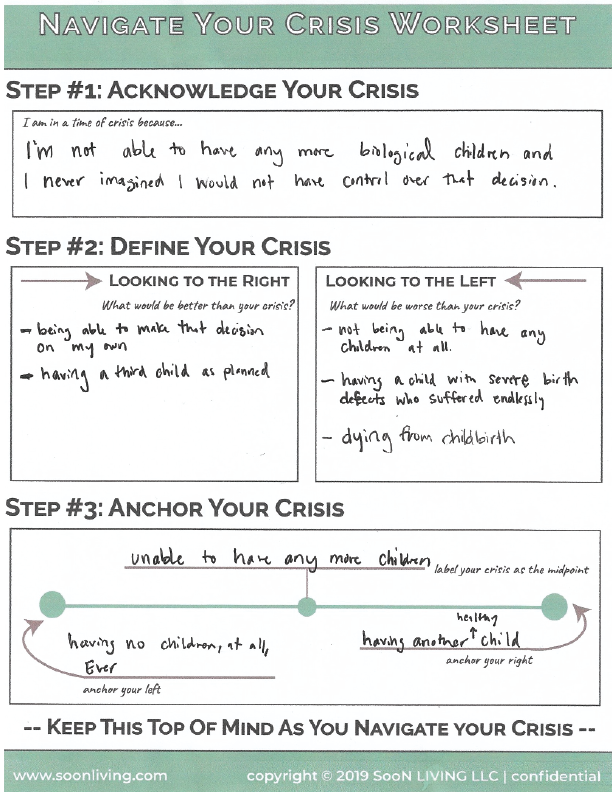
Example Worksheet
So again, 36 — not my best year. Even so, I have a healthy family, job security and am living a life I love.
I’m hopeful that 37 will bring me more joy than pain. But since I believe that life is a perpetual rollercoaster, I know its only a matter of time before I face my next crisis. I feel less anxious about it because I know I have this framework to fall back on.
I’m curious how you navigate adversity. Share your best practices in the comments section.
Feedback? Input? Questions?
We cannot wait to hear from you!
2 Comments
Trackbacks/Pingbacks
- #control - SooN LIVING - […] had to navigate a lot of crisis throughout my life. I’ve come to call that experience, “Growing up Herzog“. …
- Bainbridge Island Highlights - SooN LIVING - […] thinking, “that escalated quickly”, but it’s honestly one of the best examples of GROWING UP HERZOG I have. It’s…

My horror year was 2008. In 2008 I lost a year of my life because I was on the wrong end of a bicycle vs semi-truck accident. My recommendation is not to be the guy on the bicycle. It was a really harrowing year. There were two main things that helped me overcome. One was tangible things to look forward to in my future. I was 29 years old, married to an amazing lady, we had a really solid group of smart grad school friends, and I was in the middle of a really stimulating PhD where I had earned a full-ride fellowship. I met lots of people in the various inpatient and outpatient settings and some struggled more than others. I had a lot of things to look forward to in my life. I had never really thought about having kids that seriously, but I can vividly recall telling my wife while lying on a hospital bed that as soon as I’m better I want to have kids. We had some really amazing friends and I realized I wasn’t alone and there was lots of support. Also, oxycodone that certainly helps too. Losing a year of my life and being mere minutes away from losing my whole life from collapsed lungs, made me cherish time…and friendship…and community. I have thrown myself in to cherishing my parent years, volunteering in their school, enrolling them in every activity under the sun and trying to make the best of my time and develop friendships. The covid years were particularly hard for me because I saw time slipping away after already having lost a year and without the familiar community support and friendship because we were so isolated. I saw my kids normal and irreplaceable childhood being interrupted. Anyways, I digress. These days I try to manage difficulties by having lots of things to look forward to. From time to time I try to tap in to that 30-year old who was so hopeful to be alive and mostly recovered with a new lease on life.
Casey, thank you for sharing your incredibly impactful and personal story. Your determination to focus on the positive aspects of your life, even in the face of such a traumatic event, is a testament to your resilience. The challenges posed by the COVID-19 pandemic have affected many, but your perspective on it, considering your past experiences, adds a unique layer of depth. Your commitment to cherishing your parent years and creating a rich, fulfilling environment for your children reflects a profound understanding of the value of life and the significance of meaningful connections. Thank you for sharing your journey, and I hope that your continued focus on the positive aspects of life brings you fulfillment and joy in the years to come.